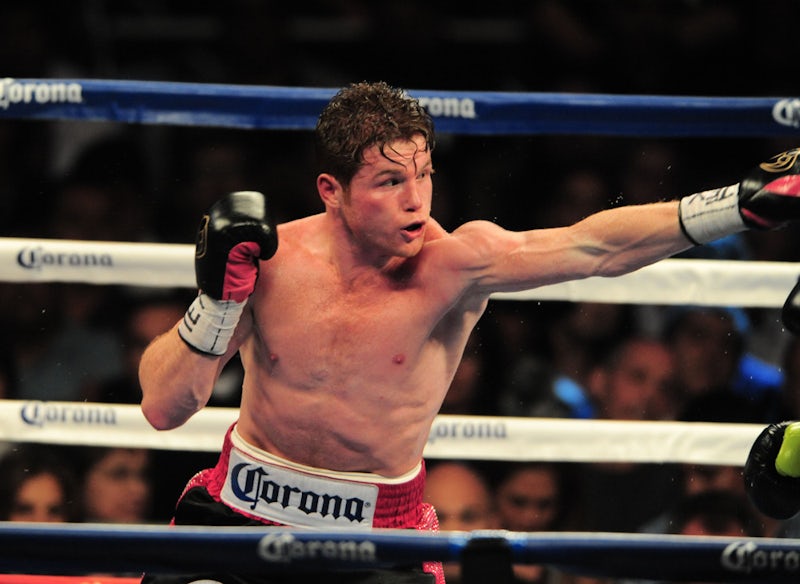ADVERTISEMENT
Finishing skill is a lost boxing art

Canelo Alvarez. (Photo by John Rivera/Icon Sportswire)
They don’t build fighters like they used to.
In recent years, boxing has seen an increasing amount of risk-averse fighters and matchmaking that has frustrated fans and stagnated development. We can’t blame everything on politics, and fighters carry their share of the blame.
If there is anything fighters don’t have enough of, it’s finishing skills.
That goes beyond the art of the one-punch knockout. A great finisher breaks an opponent down, stalks, and waits for the moment to unleash their killer instinct.
Those killers are among us, but they’re a rare breed.
What makes a great finisher?
A fighter with strong finishing skills has the wherewithal to finish a fight at any time.
Great finishers don’t sit back and appreciate their work when they stun or stagger an opponent. They inflict maximum damage to the head and body to score a stoppage or swing momentum in their favor. Sugar Ray Leonard’s stoppage of Thomas Hearns in their first fight is a prime example of excellent finishing skills.
The ability to finish also translates into a fighter’s ability to make something from nothing. A great example is Shane Mosley’s violent knockout of Antonio Margarito, which started after a glancing shot. Mosley used that momentum to put the iron-chinned Margarito down for the count.
Today’s best pound-for-pound fighters are great finishers
Most expert pound-for-pound lists will include Terence Crawford, Canelo Alvarez, Naoya Inoue, and Vasyl Lomachenko. One thing these fighters have in common is excellent closing ability.
Some set traps to land big shots, like Crawford and Canelo, while others overwhelm damaged foes with blinding speed or blunt-force trauma, like Lomachenko and Inoue.
There is a technical aspect to being a great finisher, and these fighters are among the most gifted boxers today. Deontay Wilder and Gervonta Davis may have the eye-popping knockouts that will make Sportscenter, but there isn’t much rhyme or rhythm to their approach. Power doesn't carry across weight classes like skill does, so an excellent finisher is indicative of great skill.
Uneven matchmaking is the prime cause
While nobody would dare question the dedication of a boxer, fighters are not being matched as well as they were 20 or 30 years ago. When fighters frequently face meandering opponents, there is no adversity to overcome. Fire makes steel, and if a fighter and his team don’t need to train for a war, they won’t.
If a fighter is ahead, and their opponent is showing no signs of troubling them, there is no reason to go the distance. Fans don't want to watch the winner backpedal and potshot. They want a thrilling knockout.
Floyd Mayweather is not as revered as Manny Pacquiao, despite being the better fighter, and that’s because Pacquiao's approach is more exciting than Mayweather’s methodical nature.
Coaches are also to blame
This may be the era of the diva fighter, but another deficiency of this era are the trainers.
Trainers with old-school mentalities are no longer commonplace. We don't see things like Emmanuel Steward slapping Lennox Lewis on the chest, begging him to knock out a listless Mike Tyson, or even Freddie Roach urging James Toney to dig deep to drop Vassiliy Jirov.
Modern coaches are now reflective of the fighter, and in some cases, they are happy to go along for the ride. That’s not to say this is a permanent trend, because there are coaches who are emerging that can teach and refine those skills. Trainers like Eddy Reynoso, Brian McIntyre, and Derrick James are popular because of their work with some of the sport’s best. In due time, they may yet bring back this lost, exciting art back to the fight game.
ADVERTISEMENT